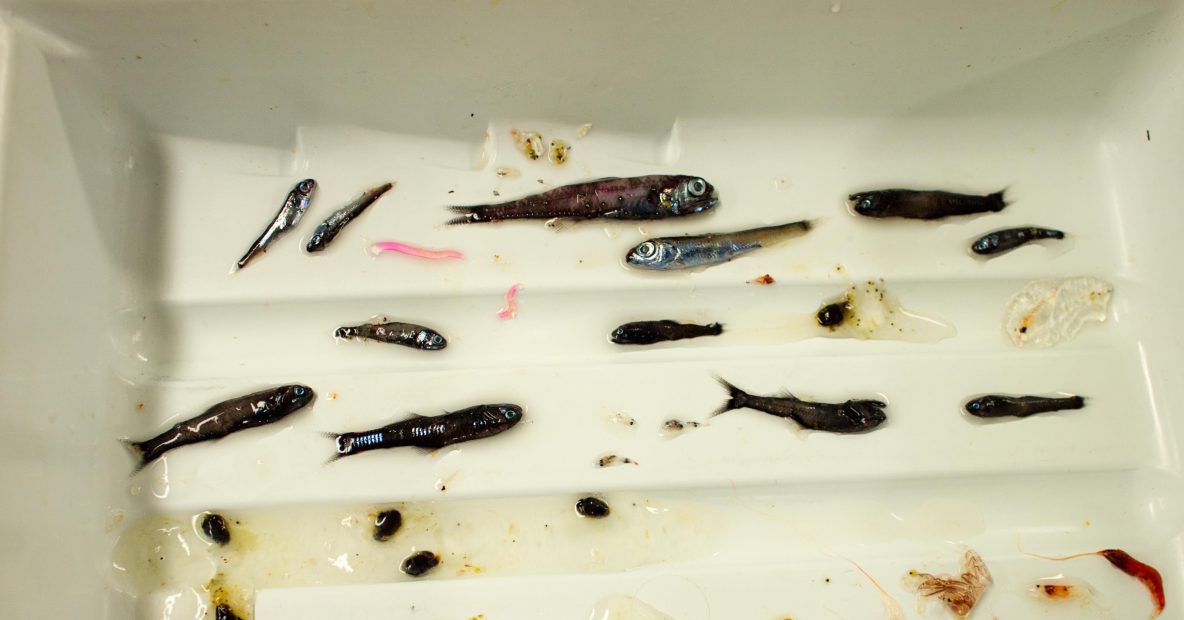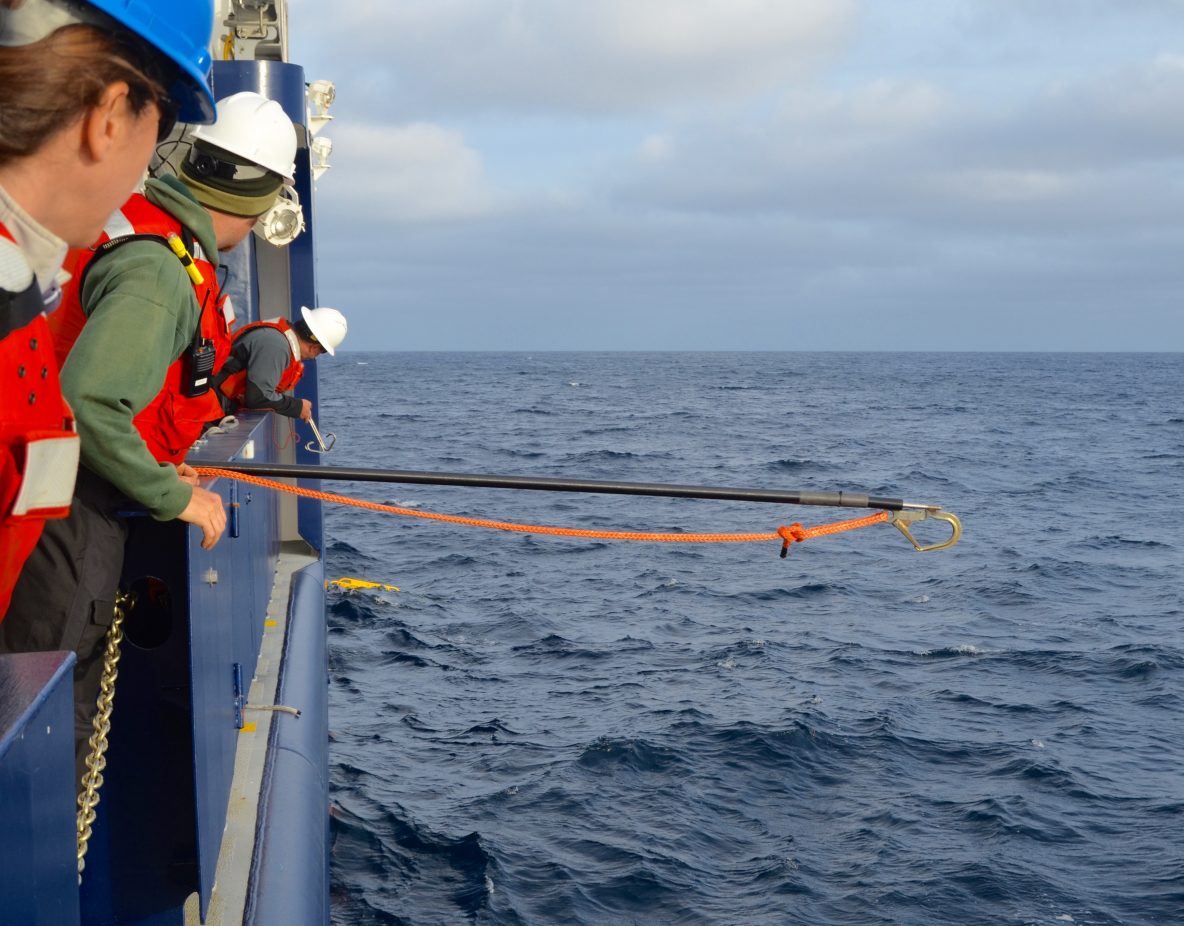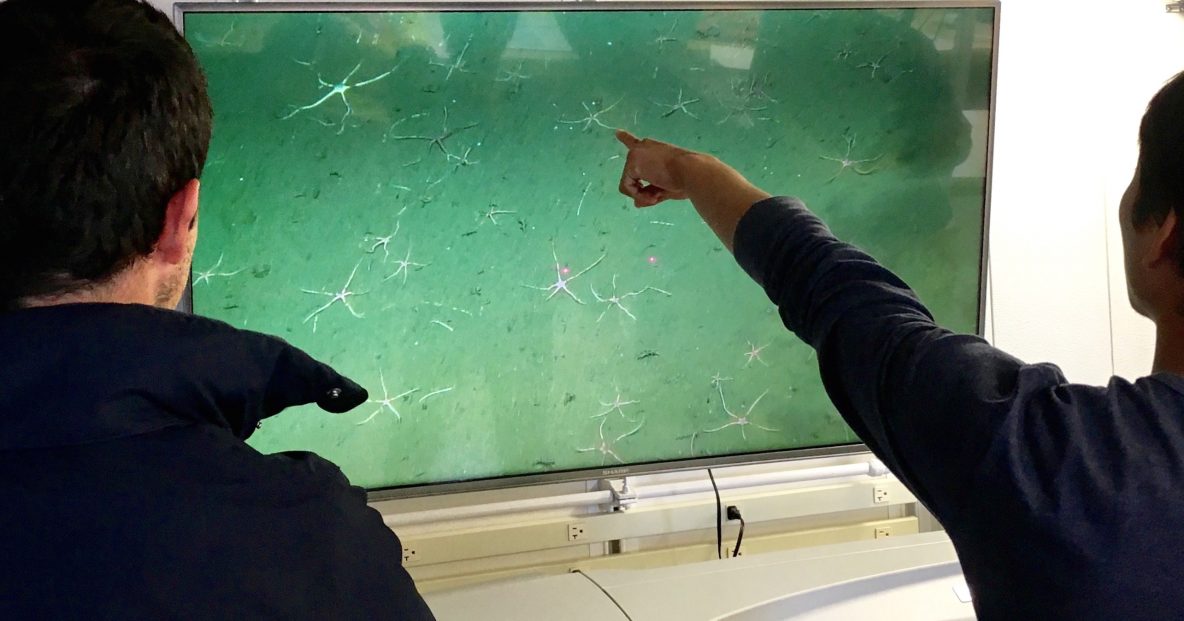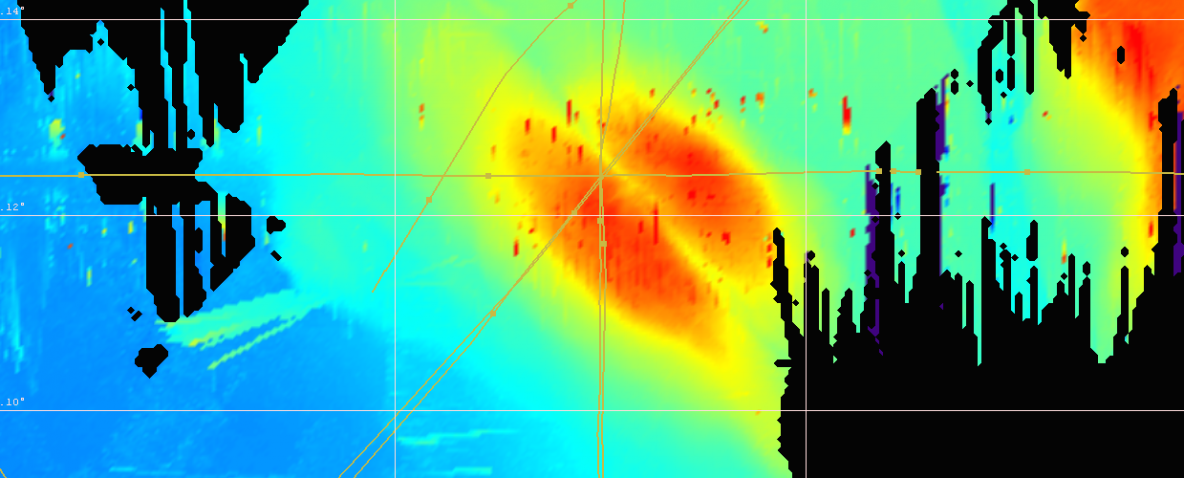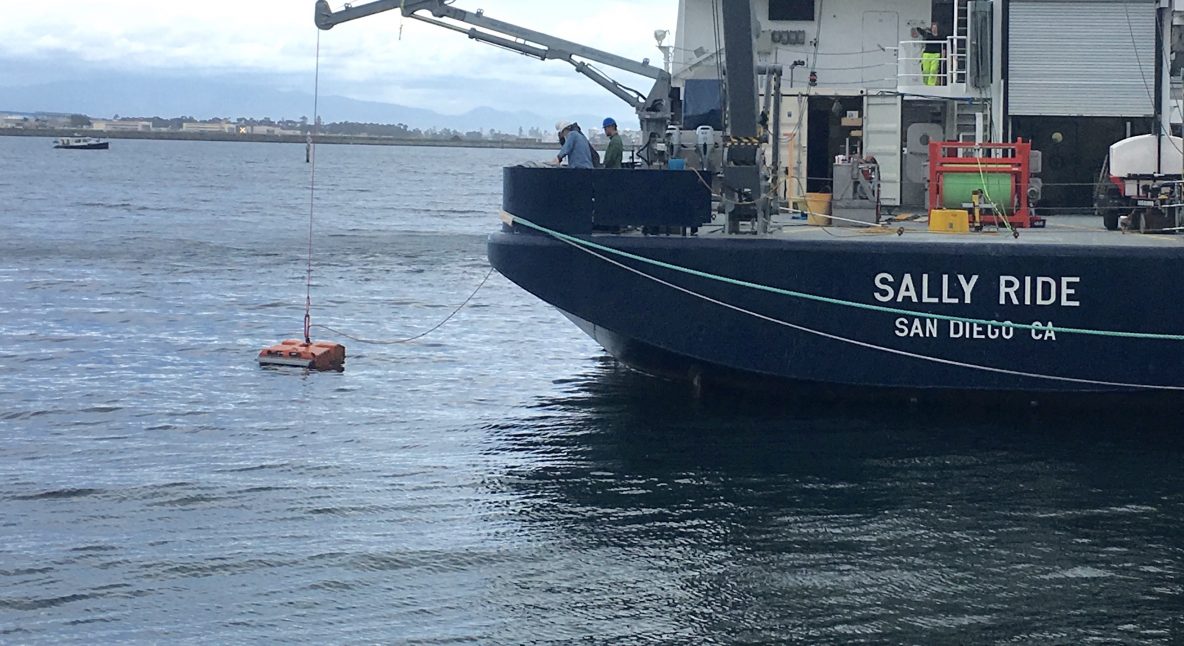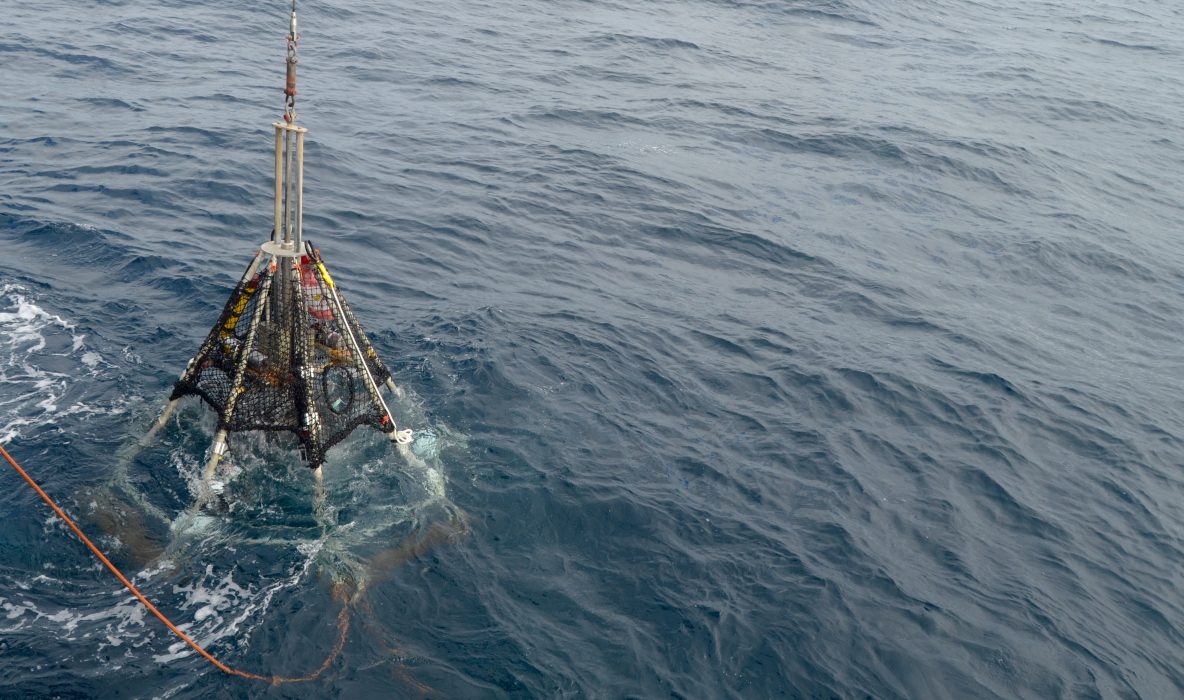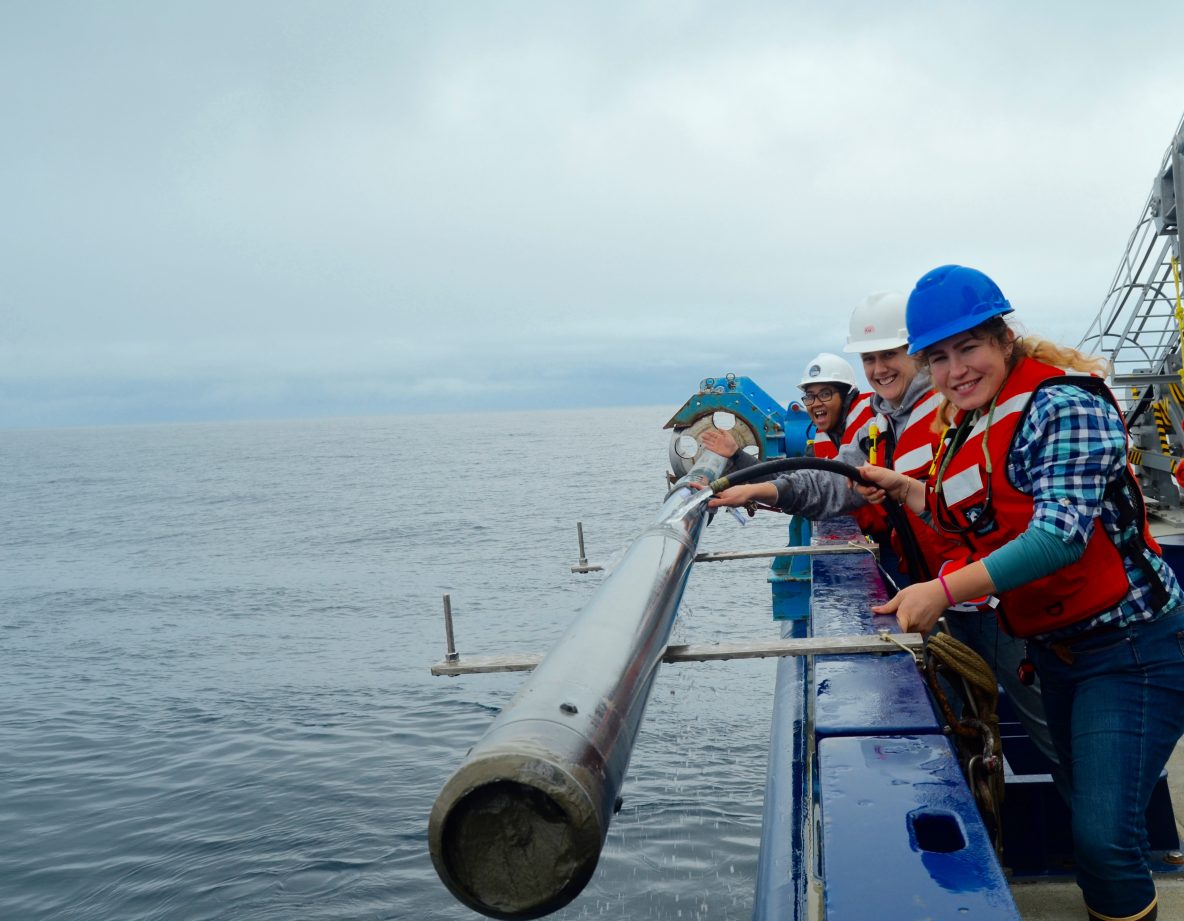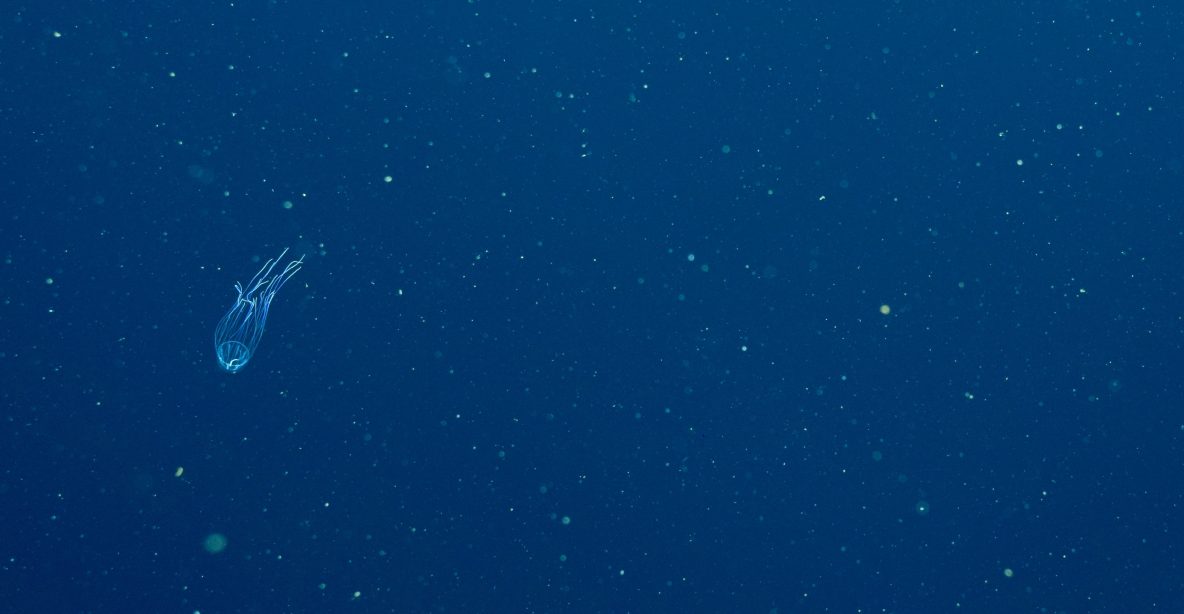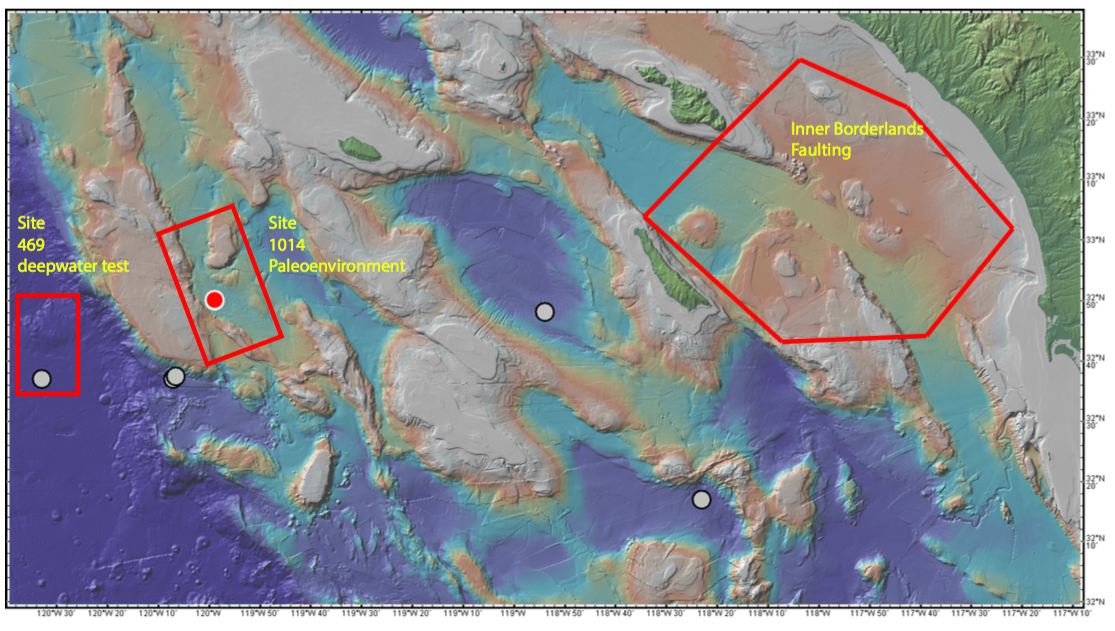There is a migration of “prey” species like small fish and zooplankton to shallower waters after dark, which are then followed by larger, predatory species. It’s a phenomenon that can be seen using the echo sounder onboard R/V Sally Ride called a Fish Finder that sends out pings at five different frequencies. The plots of sound return data (shown here) are used to … Read More
SIO Acoustic Ecology Lab
Sometimes when R/V Sally Ride leaves port in San Diego there’s a long transit to the first station and the science party gets some downtime (the crew is always working). Not so on this trip – within 3 hours the fantail was crawling with scientists ready to deploy a mooring in the San Diego Trough. Within 24 hours, two moorings had been deployed and another … Read More
Seafloor Images from ROV Trident
SIO technicians took ROV Trident to the seafloor multiple times during the week-long cruise on R/V Sally Ride. Above are some images of animals on the seafloor. For scale, the red lasers are set 15cm (6 inches) apart. There were no biology groups onboard so animals weren’t the focus, but it’s always fun to see them in their natural environment. … Read More
Overnight Ops: CTD Yo-Yos
There’s a lot of different groups of Scripps scientists onboard R/V Sally Ride this week, all vying to get their science objectives done. One of the groups has been here before. Back in December, grad student Maddie Hamann was chief scientist of a three day cruise recovering moorings and doing CTD surveys to study internal tides around the La Jolla … Read More
Overnight Ops: Mapping a Fault
For three nights on this research cruise aboard R/V Sally Ride, John DeSanto, a graduate student in Dr. David Sandwell’s lab at Scripps, used the ship’s multibeam to map the seafloor. His target was an area of the San Diego Trough fault, which runs offshore from the Mexican border to Catalina Island. The multibeam, as you may remember from a previous post, … Read More
ROV Trident
For the next week, Scripps’ remotely-operated vehicle (ROV) will be aboard Sally Ride. Named Trident after UC San Diego’s mascot, it’s rated to a depth of 2,000 meters. Technicians from SIO plan to deploy the ROV each day using a small crane bolted to the port side of the ship. The control center is in a converted shipping container also bolted to … Read More
Multi-Corer Trials
As part of this science verification cruise, groups from Scripps, WHOI, Oregon State, Sacramento State, URI, CSU Bakersfield, and the USGS are testing out various coring devices using R/V Sally Ride. This requires a very specific setup on the fantail, with two small cranes bolted down for fine-tune positioning of the heavy coring equipment. Also on deck are two container vans, one … Read More
Logging Core Samples
The core samples taken so far onboard R/V Sally Ride have utilized either a 20 or 30 foot long cylinder with PVC pipe inside. Ideally, the entirety of the pipe is filled, but the amount of sediment actually recovered can vary. For example, if a layer underneath the surface of the seafloor is harder clay, the pipe may get stopped short. … Read More
Photos from the Multi-Corer
One of the many instruments onboard the multi-corer frame is a 24-megapixel camera that take flash photographs every 10 seconds. The camera belongs to the NSF-funded MISO (Multidisciplinary Instrumentation in Support of Oceanography) facility at WHOI, and is designed to visually document the area of the seafloor where core samples are taken. An added bonus of taking pictures during the descent and ascent through … Read More
Choosing a Coring Site
Coring operations are taking place mostly during daylight hours, with the ship running overnight survey transits. An echo sounder mounted to the bottom of the ship sends a 3.5kHz ping and records the return, producing sub-bottom profiles. These images typically show the types of sediments 20-50 meters below the ocean floor, and can capture up to 100 meters under certain conditions. The ping is a … Read More

